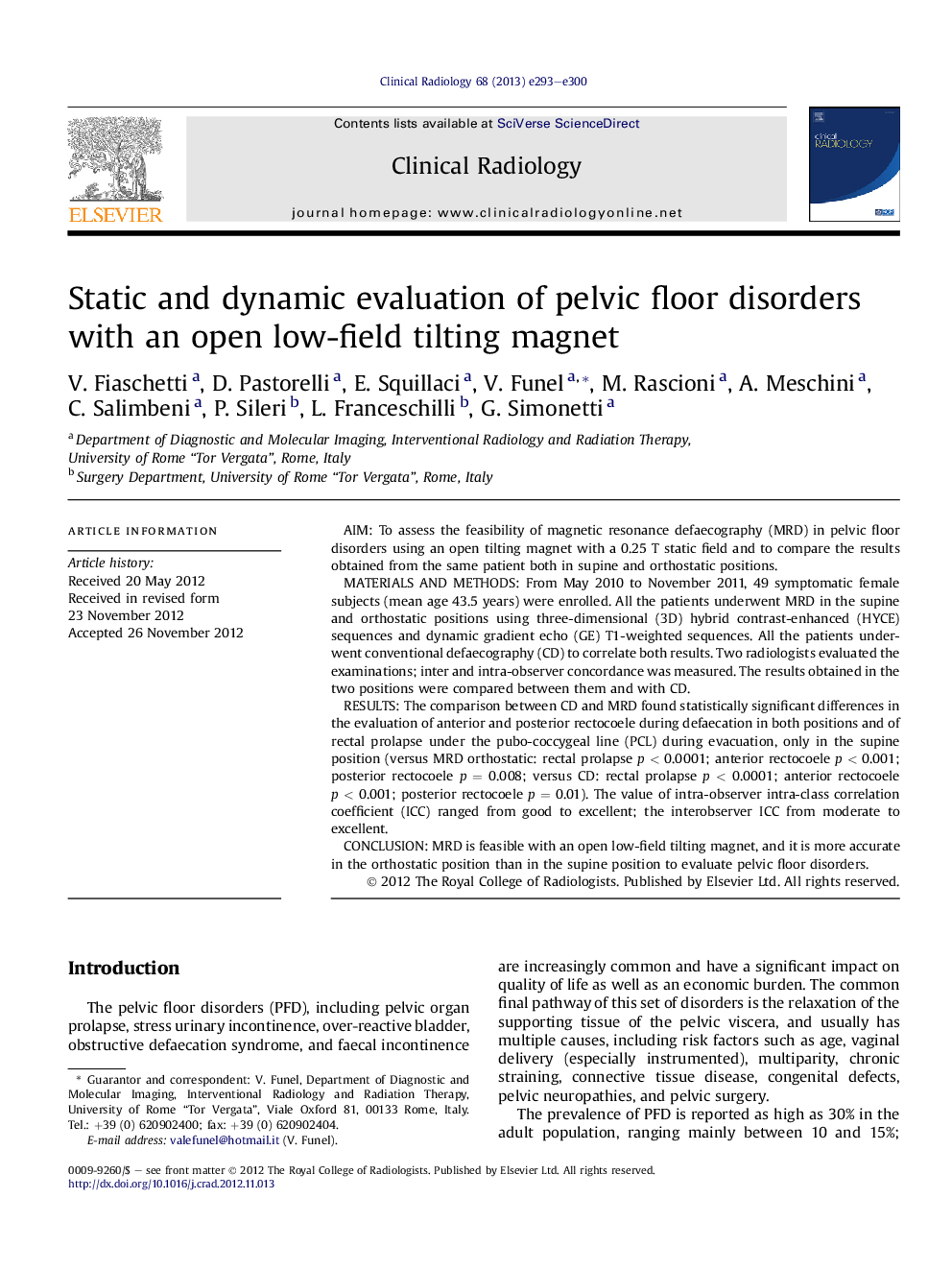| Article ID | Journal | Published Year | Pages | File Type |
|---|---|---|---|---|
| 3981900 | Clinical Radiology | 2013 | 8 Pages |
AimTo assess the feasibility of magnetic resonance defaecography (MRD) in pelvic floor disorders using an open tilting magnet with a 0.25 T static field and to compare the results obtained from the same patient both in supine and orthostatic positions.Materials and methodsFrom May 2010 to November 2011, 49 symptomatic female subjects (mean age 43.5 years) were enrolled. All the patients underwent MRD in the supine and orthostatic positions using three-dimensional (3D) hybrid contrast-enhanced (HYCE) sequences and dynamic gradient echo (GE) T1-weighted sequences. All the patients underwent conventional defaecography (CD) to correlate both results. Two radiologists evaluated the examinations; inter and intra-observer concordance was measured. The results obtained in the two positions were compared between them and with CD.ResultsThe comparison between CD and MRD found statistically significant differences in the evaluation of anterior and posterior rectocoele during defaecation in both positions and of rectal prolapse under the pubo-coccygeal line (PCL) during evacuation, only in the supine position (versus MRD orthostatic: rectal prolapse p < 0.0001; anterior rectocoele p < 0.001; posterior rectocoele p = 0.008; versus CD: rectal prolapse p < 0.0001; anterior rectocoele p < 0.001; posterior rectocoele p = 0.01). The value of intra-observer intra-class correlation coefficient (ICC) ranged from good to excellent; the interobserver ICC from moderate to excellent.ConclusionMRD is feasible with an open low-field tilting magnet, and it is more accurate in the orthostatic position than in the supine position to evaluate pelvic floor disorders.
